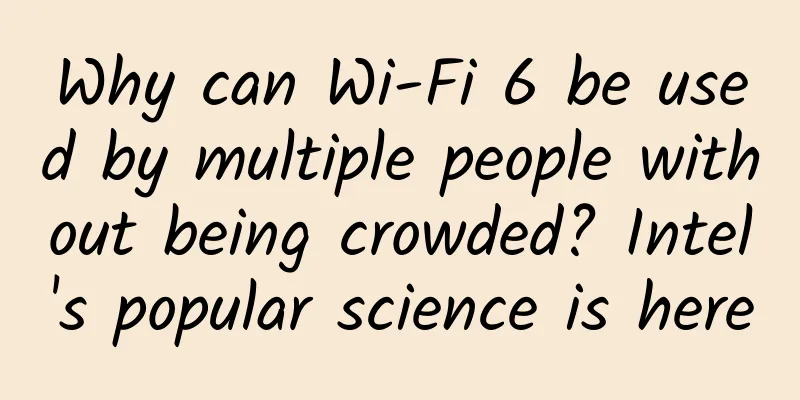If VoLTE fails to work well with 5G, it will be a failure

|
The VoLTE function was once a major feature promoted in the 4G era, but five years after 4G commercialization, VoLTE is still not fully popularized. As data charges have dropped, users rarely make phone calls. More people choose to use WeChat voice calls directly, resulting in slow deployment of VoLTE by operators. However, VoLTE is a necessary solution to poor network coverage in the 5G era. If VoLTE is not done well, 5G will not be done well.
VoNR needs VoLTE support With the advent of the 5G era, VoNR will become the mainstream voice technology. According to relevant institutions’ forecasts, the global market for VoNR infrastructure is expected to reach US$13.6 billion by 2023. Of course, this is an ideal situation. In the early stages of 5G construction, when a mobile phone moves to an area with poor 5G signal coverage, it still needs to switch to the LTE network and use VoLTE to provide voice services. In the early stages of 5G construction, VoNR and VoLTE will together form the basis for solving voice services, so if VoLTE is not done well, 5G will not be done well. The pain of China Unicom users: the network drops back to 3G when making a call With VoLTE, you don’t need to worry about incoming calls when playing games The first time I heard about VoLTE was in 2015 when the network was just upgraded to 5G. At that time, although the Internet was using 4G network, it was necessary to fall back to 2G or 3G network when making calls. Especially when playing Honor of Kings, I am particularly afraid of phone calls, and once a call comes in, I will switch to 2G or 3G network. When you enter the game again, your opponent may directly push your crystal, and you will lose everything with just one phone call. Later I heard that the VoLTE function would be activated. Simply put, you can use the 4G network to make calls, which will not interfere with playing games at all. So when this function was launched in 2016, I immediately applied for the service. You can confirm whether your phone supports VoLTE by simply checking whether "Voice and Data" is enabled on the 4G network in the "Cellular Network" settings. 5G cannot do without VoLTE (Image source: China Telecom) What exactly is VoLTE? VoLTE is the abbreviation of “Voice over Long-Term Evolution”. It is an IP data transmission technology that does not require 2G/3G networks. All services are carried on the 4G network, which can realize the unification of data and voice services on the same network. In other words, the 4G network not only provides high-speed data services, but also provides high-quality audio and video calls. To put it more simply, VoLTE technology uses the user's 4G traffic data to make calls. So why not worry about our traffic? This is because VoLTE uses a dedicated channel on the mobile data network, and voice call services have the highest priority in the entire LTE network, so VoLTE has the advantages of better call quality, greater stability (QoS), and no traffic fees.
Seeing such a setting indicates that the VoLTE function is supported What are the three major operators doing? However, when it comes to the advantages of VoLTE, China Mobile users are obviously very happy, while China Telecom and China Unicom users are about to cry. China Mobile launched VoLTE service as early as 2016, but there has been no update in the service introduction in recent years. Before November 29, 2018, China Telecom users were unable to use the VoLTE function. As soon as a call came in, the game delay went through the roof. However, China Telecom's VoLTE has already launched trial commercial services at the above time, and can meet the VoLTE needs of 31 million users by the end of 2018. It will be put into large-scale commercial use in June 2019, and voice will use VoLTE by default. China Unicom users are the worst off. Not only does it not actively promote the service, but it also secretly shut down the VoLTE function nationwide. Through the author's actual testing, China Unicom's iPhone users will indeed fall back to the 3G network when making calls, and the VoLTE function is indeed not supported. At last year's China Radio Conference, China Unicom also stated that it would use VoNR technology to replace VoLTE for voice in the 5G era. However, when the author consulted Beijing Unicom, Beijing Unicom stated that Beijing Unicom's VoLTE service had been resumed. Netizens reported that the function was sometimes not working and was very useless. Conclusion China Mobile has already fully covered VoLTE early on and adopted pure IPv6 access, making full preparations for 5G. China Telecom has also begun to make efforts to trial commercial VoLTE networks, and has made plans for the next step and is actively preparing for 5G. China Unicom's VoLTE has been turned on and off, wavering. It is still studying how to simplify the VoLTE network, and it seems that it is not in a hurry at all. Does this mean that China Unicom will be able to achieve full coverage in the early stages of 5G networking? When the 5G network is not good and fallback to VoLTE does not work, users will have no choice but to suffer with the operator. |
<<: NAT Technology for IPv4 Extension
>>: Can the Internet of Things drive the deployment of IPv6?
Recommend
5G Massive MIMO Says Goodbye to Power-hungry 5G Base Stations
The attacks on the large-scale construction of 5G...
Five-minute technical talk | A brief analysis of the stress testing method of the audio and video communication and signaling SIP protocol
Part 01 Audio and video communication process Aud...
AI and Wi-Fi 6: Driving the Revolution in Home Wi-Fi
As fixed networks enter the F5G (fifth generation...
RackNerd Mid-Autumn Festival Promotion, Los Angeles KVM Annual Payment Starting from $9.89
The Mid-Autumn Festival is still early, but the p...
To cope with the global food crisis, AI, 5G and machine vision join forces to "raise fish"
Today, the global food challenge has become a rea...
China will soon become the global center of artificial intelligence technology
What role will China's artificial intelligenc...
Talk about the past and present of programmable network elements
[[402793]] This article is reprinted from the WeC...
Is 5G ready for IoT?
5G is finally here. But what are the benefits of ...
A brief discussion on IPv6 intrusion and defense
Preface Recently, some customers started the tran...
VULTR is free as long as you charge (valid for 12 months), 19 computer room KVM monthly payment starts from 3.5 USD (support hourly billing)
VULTR has long been offering free registrations f...
Yunnan Yuxi and Huawei Enterprise Cloud deepen cooperation
On March 30, 2017, the People's Government of...
TCP: Three-way handshake and four-way wave, no blind spot answer in the interview
picture What is TCP Before understanding the thre...
Competition in the fixed broadband market enters the "second half"
China Telecom leads strongly, China Mobile overta...
You have insufficient data remaining for this month...
[[439238]] You are immersed in watching TV series...









